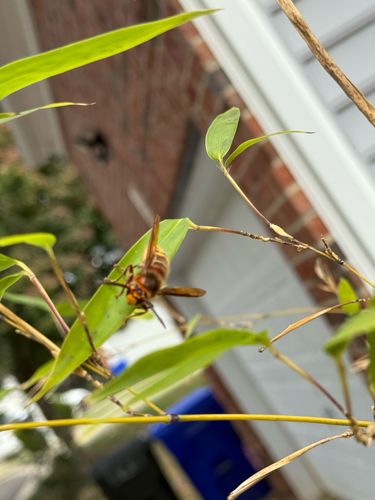European Hornet
Scientific Name: Vespa crabro
Order & Family: Hymenoptera, Vespidae
Size: Workers: 18-25 mm (0.7-1.0 inch), Queens: up to 35 mm (1.4 inches); males are typically slightly smaller than queens.

Natural Habitat
Found in temperate climates across Europe, Russia, North America, and parts of Asia. They prefer wooded areas, forests, and suburban environments, often nesting in hollow trees, wall voids of buildings, attics, or underground. They are attracted to lights at night.
Diet & Feeding
Adult European Hornets feed on nectar, tree sap, and ripe fruit. They are also predatory, hunting a variety of insects including grasshoppers, flies, bees, yellowjackets, and caterpillars to feed their larvae. Larvae produce a sugary secretion that adults consume.
Behavior Patterns
European Hornets are social insects that live in colonies, building paper nests from chewed wood fibers mixed with saliva. They are generally less aggressive than yellowjackets but will sting if their nest is disturbed or if they feel threatened. They are known to be active during the day and can also forage at night, attracted to light sources. Their colonies are annual, dying off in late autumn with only new queens surviving to overwinter and start new nests in the spring.
Risks & Benefits
Potential Risks: Their sting is painful, and like other wasps, they can sting multiple times. Allergic reactions (anaphylaxis) are possible for sensitive individuals. While generally not aggressive unless provoked, large nests near human activity can pose a risk. They can also damage soft-wood trees by stripping bark to get to sap or to build nests. Potential Benefits: They are natural predators of various pest insects, helping to control their populations in ecosystems. They also play a minor role in pollination as they visit flowers for nectar.
Identified on: 10/26/2025